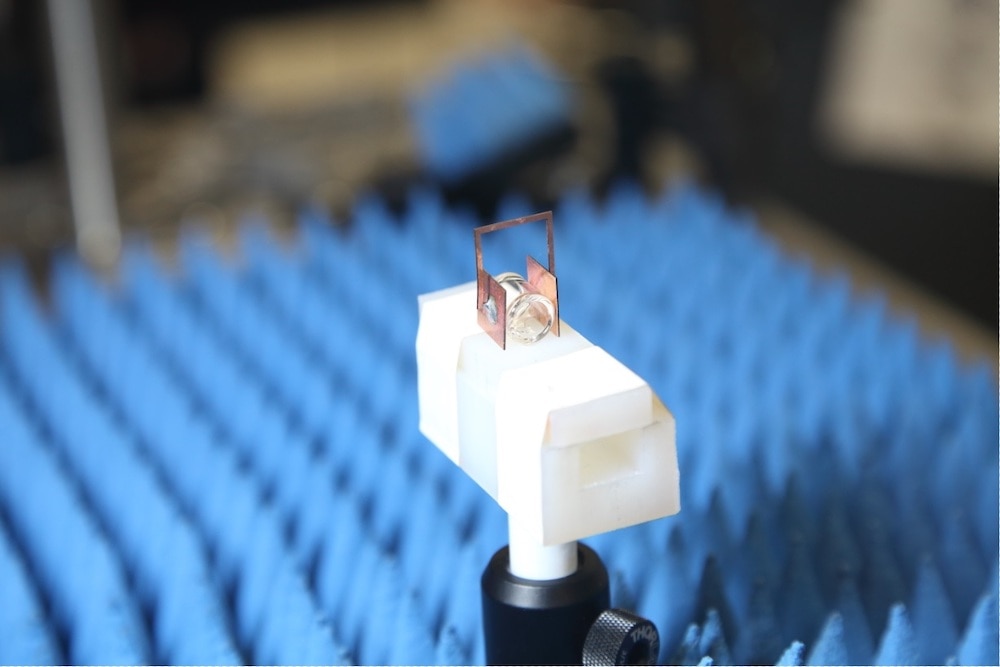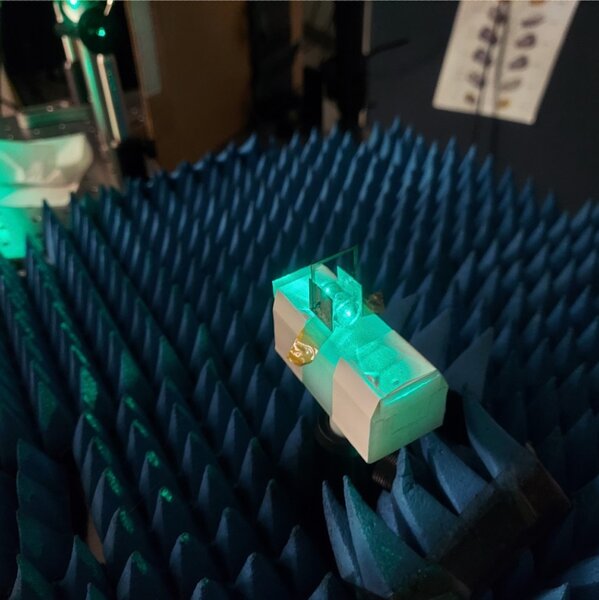Create a free profile to get unlimited access to exclusive videos, sweepstakes, and more!
Headphone-wearing atomic radio could be the future of signal detection
Did you know the atoms are listening to us? Because they are, and they're very good at it.

The War of the Worlds, and our real-world search for extraterrestrial life, are inextricably bound with radio. In 1938, Orson Wells directed and narrated a radio adaptation of his famed novel to both delight and horror. Decades later, SETI and other radio telescope programs, started searching the cosmos for radio waves as potential evidence for extraterrestrial intelligence.
Communication, both on our own planet and with any potential alien comrades, relies on our ability to transmit and receive signals, something we’ve only been doing in earnest for a little over a century. Traditionally, picking up radio waves requires bulky equipment, as a consequence of the physical limitations of waves. While advances in technology have allowed us to shrink many of our gadgets to fit inside our pockets, when you get down to really low frequencies with large wavelengths, things get complicated.
The future of radio frequency detection, however, is about to get a little weirder and a whole lot cooler. Christopher Holloway from NIST, and colleagues, are using highly excited atoms in place of antennae to pick up and translate RF signals across a wide spectrum of frequencies. Now, using a small device called a split-ring resonator — which looks an awful lot like a miniature pair of headphones — they’ve been able to increase the sensitivity of their atomic radio, making it a hundred times more sensitive than before. The results of their work were published in the journal Applied Physics Letters.
The core of their device is a small glass cylinder filled with atoms and excited from the outside with a pair of differently colored lasers. That laser light excites the atoms until they reach a high-energy state known as a Rydberg state.
“If you think of a simple model of an atom, it’s a nucleus with an electron spinning around it. We take that electron and move it up to a very high orbit with a laser beam. When its at a very high energy state, it’s very susceptible and sensitive to an electric field,” Holloway told SYFY WIRE.
When those excited atoms come into contact with an electric field, like those generated by radio frequencies, the atomic state changes. Then, using another laser, the team measures the state change of the atoms to reveal the nature of the field. The benefit of this system is that it isn’t constrained by the wavelength of the radio frequencies and is therefore capable of picking up even very low frequencies with large wavelengths, which would typically require massive antennas.
Prior to the introduction of the split-ring resonator, their atomic radio was capable of picking up these frequencies but ran into a physical limitation when the field was especially weak. The resonator effectively increases the strength of the field right around the atoms, increasing their ability to interact with that field 100-fold.
“If we put the atoms in a field and if it was very weak, the atoms start running into their limitations. If we can take the field we want to measure and increase its value by putting it in this resonant structure, then we’ve enhanced the field at the atoms,” Holloway said.
In short, the resonator picks up the electric field and traps it inside, enhancing the signal strength. Models of the system estimated it should increase the signal strength by up to 130 times. In practice, experiments were able to achieve signal enhancement of about three-quarters the theoretical limit, likely because of energy loss or imperfections in the resonator itself.
To date, scientists have succeeded in using their system to transmit audio, video, and even stream real-time video games in the lab, all using their small chamber of atoms as the signal receiver. While those applications are objectively cool, they’re really using them as a proof of concept to probe the physical limits of their system.
The ultimate aim is to put it to scientific use in measuring weak fields beyond the reach of our current technologies. Holloway imagined creating a complete system about the size of a deck of cards and placing that on a satellite or space probe to measure black body radiation in space. These atomic radio receivers might be especially good for that sort of work because they are less susceptible to noise and interference than conventional receivers.
“One problem you might have with other systems is that signals from all frequencies can couple into your system. Here, we can be very selective. The atom is a very tight resonant structure which only resonates at precise frequencies. By putting it into another structure that also only resonates at certain frequencies, we end up with something that’s less susceptible to noise,” Holloway said.
That strength, however, can also be a limitation. Holloway explained that their atom system is great at picking up a frequency, but it’s discrete. It would be like being able to pick up a single radio station on your car radio perfectly, but not being able to change the station. They are currently working on methods by which they could tune to different frequencies, similar to turning the knob on your car stereo.
Maybe then, we’ll finally be able to find the secret messages our extraterrestrial friends have left for us. If not, we’ll at least be able to pick up signals without interference.



























